I’ve owned the Sony FE 70-300 F4.5-5.6 G OSS lens since it was first released and used it a great deal on my Sony a6400 and Sony a6500 cameras.
However, because the FE 70-300 is a full-frame lens I always wished there was a smaller and less expensive APS-C alternative with a similar focal range, image quality and AF speed.
Thankfully that wish was finally granted when Sony announced the E 70-350mm G OSS lens for APS-C cameras.
Status: Rolling
Latest Update: Added body design and handling comparison.

Contents
Body Design
Both lenses are very well made and carry the Sony G label, this means they come just below the very expensive Sony GM lenses in terms of optical and build quality.
Sony claims that both lenses are also dust and moisture resistant, despite this claim only the E 70-350 features a rubber gasket around the lens mount to help keep dust and moisture at bay, there is no rubber gasket on the FE 70-300.
Size and Weight
The E 70-350 is the lightweight of these two telephoto zoom lenses and weighs in at 625g or 22.1 oz. At 70mm it measures 142mm (5-5/8 in.) in length, but extend the focal length to 350mm and it’s now 190mm (7.48 in.). The lens has a maximum diameter of 77mm (3-1/8 in.)
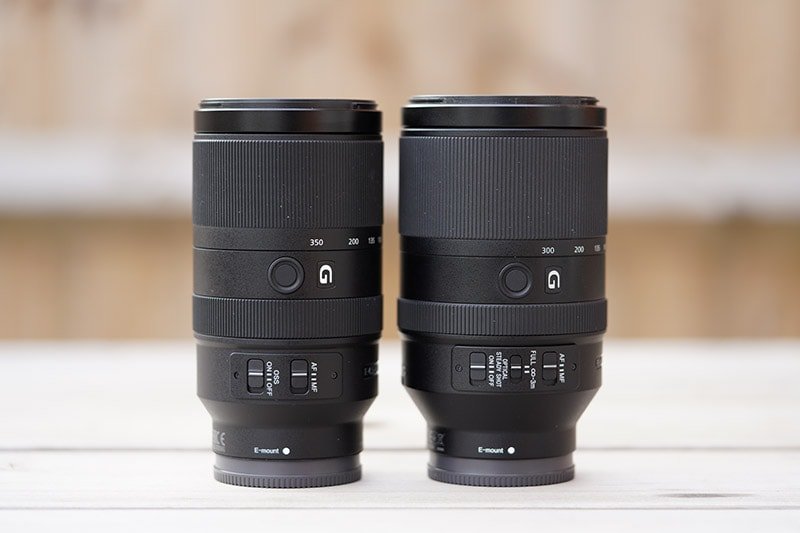
The FE 70-300 weighs in at 854g (30.2 oz.), making it 229g (8.07 oz.) heavier. It measures 143.5mm (5.75 in.) in length when at 70mm focal length and 210mm (8.27 in.) when extended to 300mm focal length. The lens has a maximum diameter of 84mm (5-3/4 in.)

Control Buttons
Both lenses include one customizable button located between the zoom and focus rings. They also include very similar controls but not identical.
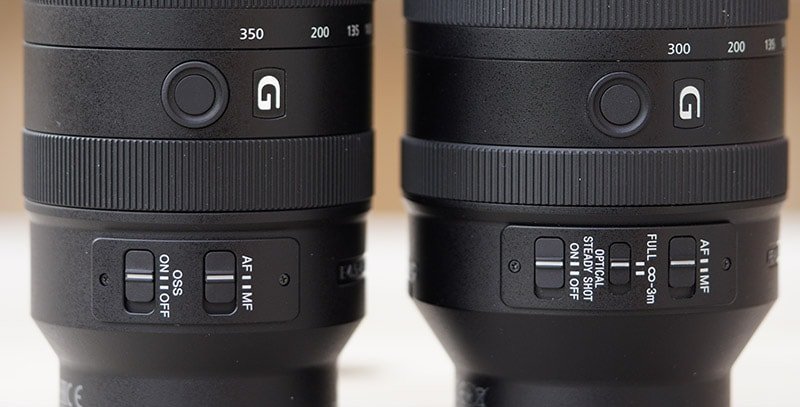
Above you can see the main lens controls and if you look closely you will notice one key difference. Have you spotted it?
Yes, Sony decided to exclude the focus range limiter switch on the E 70-350 lens. The FE 70-300 does include this switch that allows you to limit the focus to between infinity and 3 meters.
The focus limiter is often useful if you want to shoot through fences at a motorsport event or through protective glass at a zoo. When set to only focus from 3m to infinity it won’t focus on the fencing or glass directly in front of you and instead jump straight to your subject.
It’s not impossible to focus through fencing and glass without this switch but it does make it a lot easier, so it’s a shame that Sony decided to exclude it from the E 70-350.
Both lenses also include an autofocus / manual focus switch, an optical steadyshot on/off switch and a zoom lock that stops the lenses from extending when at 70mm focal length.
Focal Length
The Sony E 70-350 G has a focal length of 70mm to 350mm and a variable aperture of f/4.5 – 6.3. From 70mm to 82mm its f/4.5, 83mm to 113mm its f/5, 114mm to 199mm its f/5.6, and 200mm to 350mm is f/6.3.
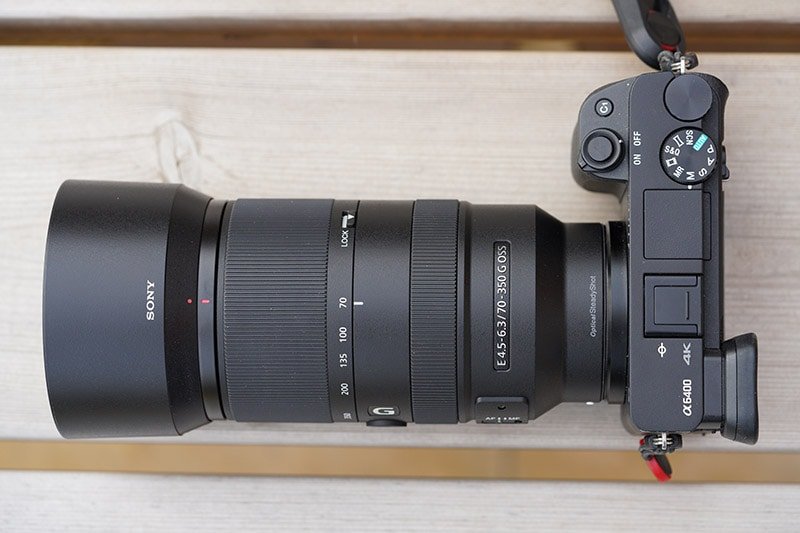
The Sony FE 70-300 G has a focal length of 70mm to 300mm and a variable aperture of f/4.5 – 5.6. From 70mm to 82mm its f/4.5, 83mm to 153mm its f/5, 154mm to 300mm its f/5.6.
Lens Hoods
The E 70-350 includes the ALC-SH160 bayonet style lens hood that locks securely into place with a twist.
The FE 70-300 includes the ALC-SH144 bayonet style lens hood that is pretty much identical to the ALC-SH160 except for its larger size.
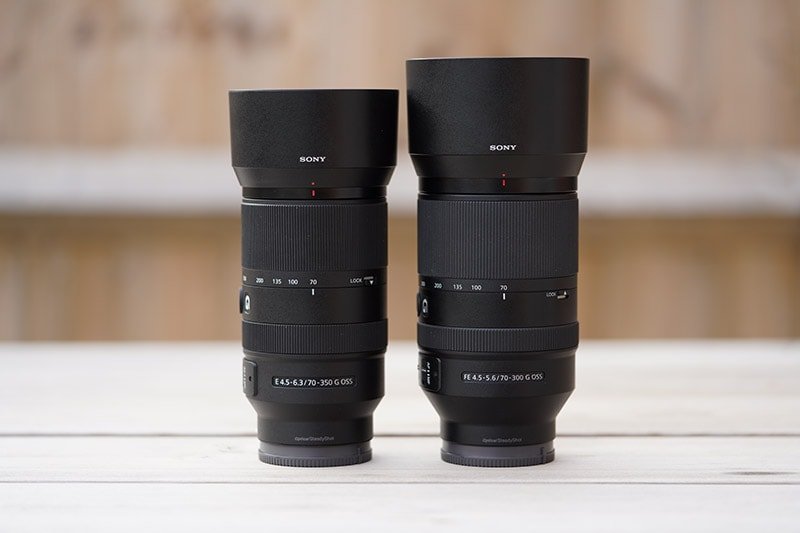
Both lens hoods twist on and click into place with a nice firm click, it’s unlikely that they will fall off on their own.
Filter Threads
The Sony E 70-350 features a 67mm filter thread whilst the FE 70-300 has a larger 72mm thread.
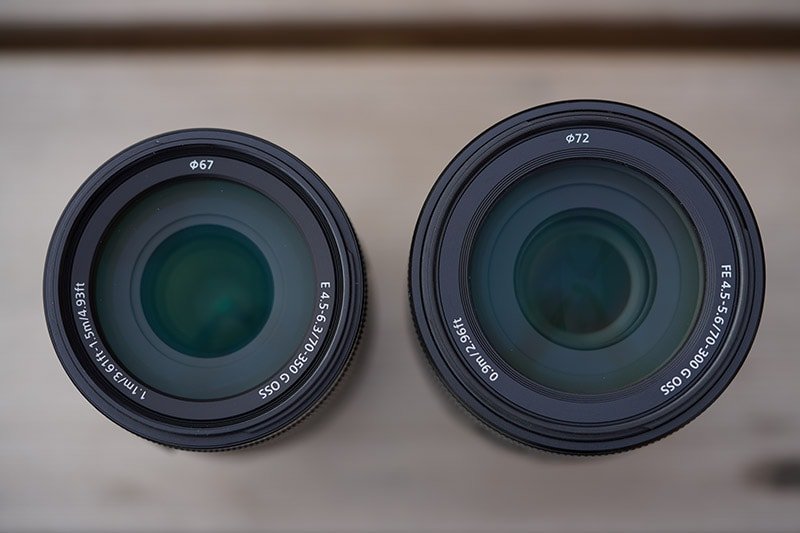
Teleconverter Support
Unfortunately neither lens supports the 1.4x or 2x teleconverters and they will not physically fit either.
Handling
Both lenses are well balanced and very comfortable to handle.
Zoom rings can be found towards the end of the lenses and are rubber coated for grip.
The zoom action of the E 70-350 is extremely smooth but there is just enough stiffness so that the lens is unlikely to zoom in or out on its own. The FE 70-300 zoom action isn’t quite as smooth, this is possibly due to the use of two moveable lens elements instead of just the one in the E 70-350.
The focus rings are also rubber coated and very smooth, with the E 70-350 having just a little more resistance.
With the E 70-350 being the smaller and lighter APS-C lens this lens most definitely pairs nicely to an APS-C body like the Sony a6400, whereas the FE 70-300 does feel rather large in comparison.
The FE 70-300 pairs much better with the full-frame bodies like the Sony a7R IV.

You can also use the E 70-350 on full-frame cameras like the a7R IV when shooting in crop mode. I’ve been using this exact combination recently and it makes for a great lightweight and compact setup when I don’t want to carry my Sony FE 100-400 or FE 200-600 lenses.
I also often like to use the Peak Design Capture to carry my camera and lens on the strap of my backpack. However, I find that the FE 70-300 is just a little too heavy to carry this way, at least comfortably. Whereas the E 70-350 I could happily carry all day long.
Sharpness Comparison
For these sharpness tests I used my Sony a6400 mounted on my Sirui W-2204 tripod.
I turned off stabilization, used the electronic shutter to avoid any shutter shock and triggered the a6400 shutter using the Sony RMT-P1BT Remote Control (Amazon).
I also manually focused with the help of focus peaking and took multiple shots whilst micro adjusting the focus, selecting only the sharpest images from each lens to compare.
350mm vs 300 Comparison 1
The following two images I shot from around 10m away. Both lenses were shot at their maximum focal range and apertures. So the E 70-350 was shot at 350mm f/6.3 and the FE 70-300 was shot at 300mm f/5.6.
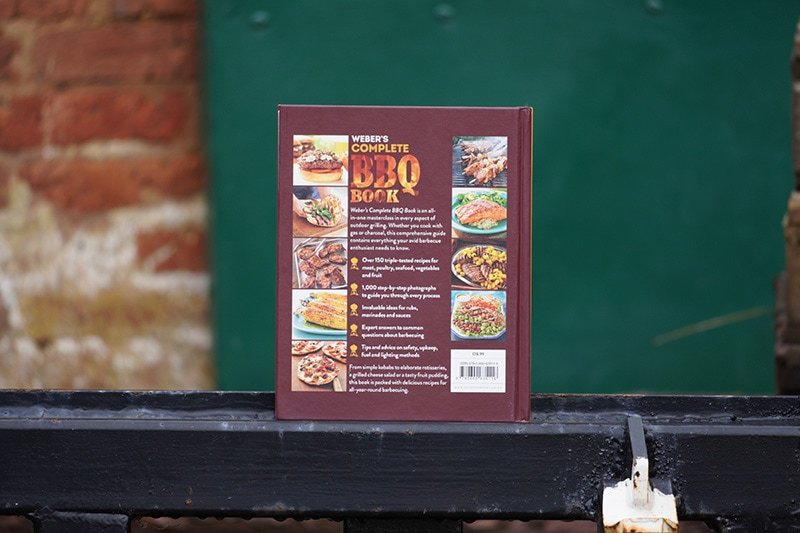
Sony a6400 + E 70-350 @ 350mm | 1/125 | f/6.3 | ISO 200 | Full Resolution SOOC Download: JPEG | RAW **
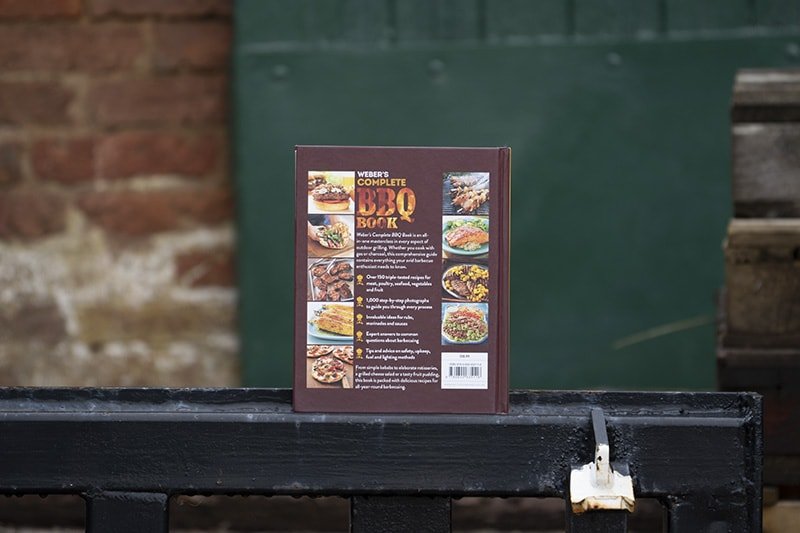
Sony a6400 + FE 70-300 @ 300mm | 1/100 | f/5.6 | ISO 200 | Full Resolution SOOC Download: JPEG | RAW **
Here’s a 100% crop and a side-by-side to make the comparison a little easier for you.

It’s extremely close but the FE 70-300 appears to be just a tiny little bit sharper to my eyes, what do you think?
350mm vs 300 Comparison 2
The following two images I also shot from around 10m away. However this time I stopped the aperture down to f/7.1 on the E 70-350 and f/6.3 on the FE 70-300.
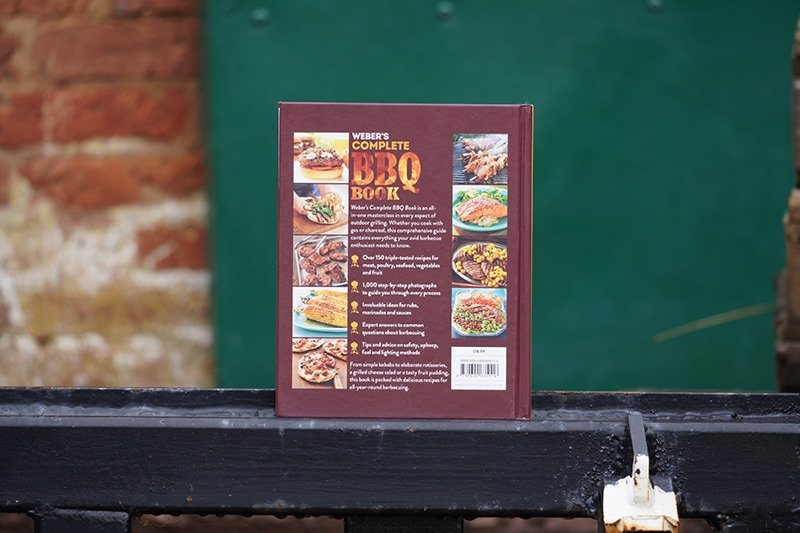
Sony a6400 + E 70-350 @ 350mm | 1/100 | f/7.1 | ISO 200 | Full Resolution SOOC Download: JPEG | RAW **
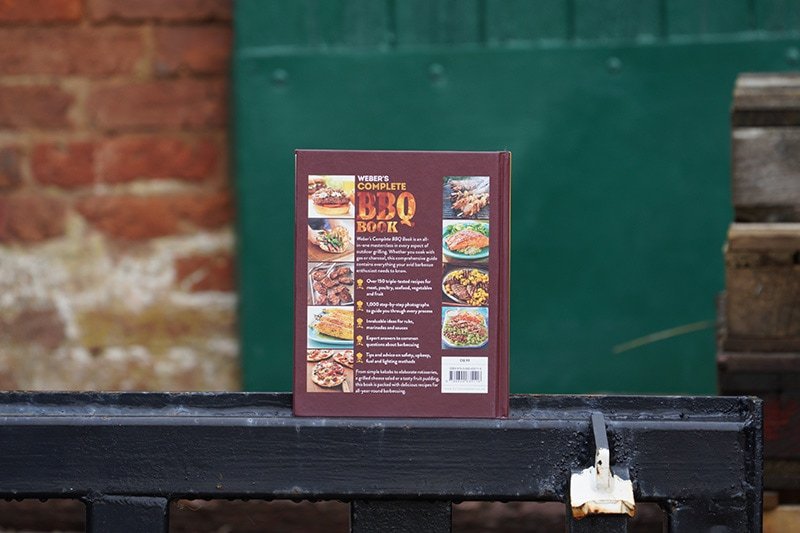
Sony a6400 + FE 70-300 @ 300mm | 1/100 | f/6.3 | ISO 200 | Full Resolution SOOC Download: JPEG | RAW **
Here’s a 100% crop and a side-by-side comparison.

Stopping both lenses down 1/3 of a stop improves the sharpness and now it’s not possible to see any difference between the two. The E 70-350 appears to benefit more than the FE 70-300 does from stopping down.
In this comparison I’m only concerned with the central sharpness and as you can hopefully see, both lenses are a little bit soft when shooting at their respective maximum apertures.
I will be adding further comparisons at a range of different focal lengths and distances very soon, including comparisons with the FE 70-300 shot on the Sony a7III full-frame body.
Autofocus Test with Frank
In the following video featuring my dog Frank I do a simple autofocus comparison and keeper test between the Sony E 70-350 F4.5-6.3 G lens and the FE 70-300 F4.5-5.6 G lens.
Autofocus Test Results
Sony E 70-350
Shots Taken (in focus zone): 102
Out of Focus: 12 (12%)
Slightly Soft Focus: 38 (37%)
Critically Sharp Focus: 52 (51%)
Keeper Rate: 88% (including slightly soft)
Sony FE 70-300
Shots Taken (in focus zone): 83
Out of Focus: 9 (11%)
Slightly Soft Focus: 28 (34%)
Critically Sharp Focus: 46 (55%)
Keeper Rate: 89% (including slightly soft)
You can see sample images from this test in the sample gallery below.
Specifications Comparison
| Lens Specifications | Sony E 70-350 F4.5-6.3 G OSS | Sony FE 70-300 F4.5-5.6 G OSS |
|---|---|---|
| Product Code: | SEL70350G | SEL70300G |
| Lens Mount: | Sony E-Mount | Sony E-Mount |
| Format: | APS-C | 35mm full frame |
| Focal Length (mm): | 70-350 | 70-300 |
| 35mm Equivalent Focal Length (APS-C): | 105-525 | 105-450 mm |
| Focus Motors: | XD linear motor | Linear focus motor |
| Lens Groups / Elements: | 13-19 | 13-16 |
| Angle of View (35mm): | N/A | 34°–8°10′ |
| Angle of View (APS-C): | 22°-4°40′ | 23°–5°20′ |
| Maximum Aperture: | 4.5-6.3 | 4.5-5.6 |
| Minimum Aperture: | 22-32 | 22-29 |
| Aperture Blades: | 7 | 9 |
| Circular Aperture: | Yes | Yes |
| Minimum Focus Distance: | 1.1-1.5 m (3.61-4.93 ft) | 0.9 m (2.96 ft) |
| Maximum Magnification Ratio (x): | 0.23 | 0.31 |
| Filter Diameter (mm): | 67 | 72 |
| Image Stabilization (OSS): | Yes | Yes |
| Focus Limiter: | No | Yes (full / infinity-3m) |
| Zoom System: | Manual External | Manual External |
| Teleconverter Compatibility x1.4: | No | No |
| Teleconverter Compatibility x2.0: | No | No |
| Diameter (mm): | 77mm (3-1/8 in.) | 84mm (5-3/4 in.) |
| Length (mm): | 142mm (5-5/8 in.) | 143.5mm (5-3/4 in.) |
| Weight: | 625g (22.1 oz.) | 854g (30.2 oz.) |
| Press Release Date: | August 28, 2019 | Mar 29, 2016 |
| Price (MRRP): | $998.00 / £829.00 | $1,273.00 / £1,079.00 |
Let’s take a closer look at some of the more interesting specs here.
Focal Length and Aperture
The Sony E 70-350 G has a focal length of 70mm to 350mm and a variable aperture of f/4.5 – 6.3. From 70mm to 82mm its f/4.5, 83mm to 113mm its f/5, 114mm to 199mm its f/5.6, and 200mm to 350mm is f/6.3.
The Sony FE 70-300 G has a focal length of 70mm to 300mm and a variable aperture of f/4.5 – 5.6. From 70mm to 82mm its f/4.5, 83mm to 153mm its f/5, 154mm to 300mm its f/5.6.
Focus Motors
The E 70-350 G features the XD (extreme dynamic) Linear Motor that can be found in the more expensive FE 135mm F1.8 GM lens along with the FE 400mm F2.8 GM and 600mm F4 GM lenses. It is the first time ever that this focus motor has been included in an APS-C lens. The XD (extreme dynamic) Linear Motor has been developed to deliver higher thrust and efficiency than previous types in order to make the most of the rapidly evolving speed performance of current and future camera bodies.
The FE 70-300 G features the older linear focus motors, so in theory the 70-350 should be the faster lens when it comes to focusing but we’ll have to wait to see if this is the case.
Zoom System
Both lenses feature external zoom designs and the lens barrels extend as you zoom. There is a lock switch to prevent zoom creep when set to the shortest and most compact focal length of 70mm.
Size and Weight
The E 70-350mm measures 142mm in length; the diameter is 77mm and it weights 625g without the lens hood attached. The FE 70-300 G is 143.5mm in length, has a diameter of 84mm, and weighs 854g without the lens hood, making the 70-300 around 229g heavier.
Aperture Blades
The E 70-350mm features 7 circular aperture blades, whereas the FE 70-300 G has 9 circular aperture blades. This should mean that the FE 70-300 is capable of producing slightly smoother bokeh.
Teleconverter Support
Neither lens supports the Sony 1.4x or the 2x teleconverters and they will also not physically fit.
Minimum Focus Distance
The minimum focus distance of the E 70-350mm is variable from 1.1-1.5 m (3.61-4.93 ft) depending on your focal length. The FE 70-300 on the other hand has a fixed minimum focus distance of just 0.9 m (2.96 ft).
Image Stabilization (OSS)
Both lenses feature Optical Image Stabilization (OSS) but neither offer a Mode 2 for panning which can be found on lenses like the FE 70-200 F4 and the FE 100-400 F4.5-5.6 GM.
Range Focus Limiter
The E 70-350mm unfortunately does not include a focus range limiter switch on the lens body. The FE 70-300 G does include a limiter switch that allows you to select between full range or infinity to 3 meters.
Price
The Sony E 70-350mm has a RRP of $998.00 / £829.00 and the Sony FE 70-300 G has a RRP of $1,273.00 / £1,079.00, making the FE 70-300mm around $275.00 / £250.00 more expensive.
Sample Images
I promise to include some none dog shots very soon! 🙂
Sony E 70-350 Sample Photos
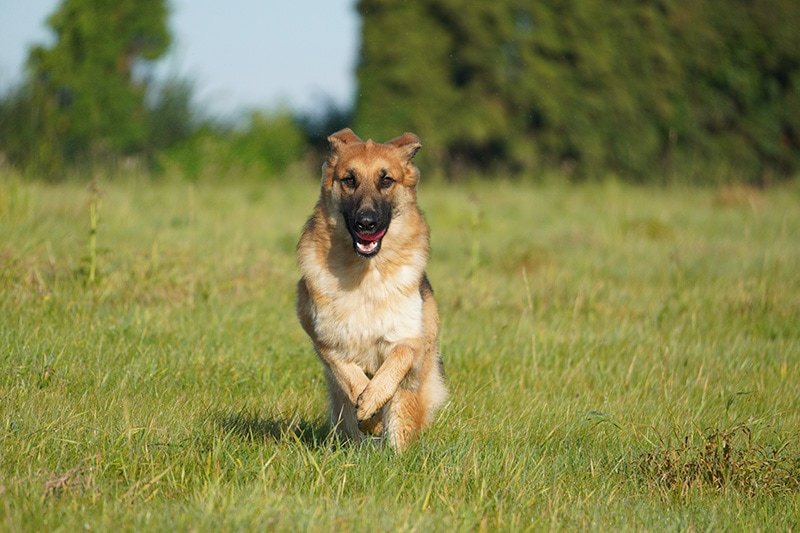
Sony a6400 + E 70-350 @ 350mm | 1/2000 | f/6.3 | ISO 640 | Full Resolution SOOC Download: JPEG | RAW **

Sony a6400 + E 70-350 @ 350mm | 1/2000 | f/6.3 | ISO 640 | Full Resolution SOOC Download: JPEG | RAW **

Sony a6400 + E 70-350 @ 350mm | 1/2000 | f/6.3 | ISO 640 | Full Resolution SOOC Download: JPEG | RAW **
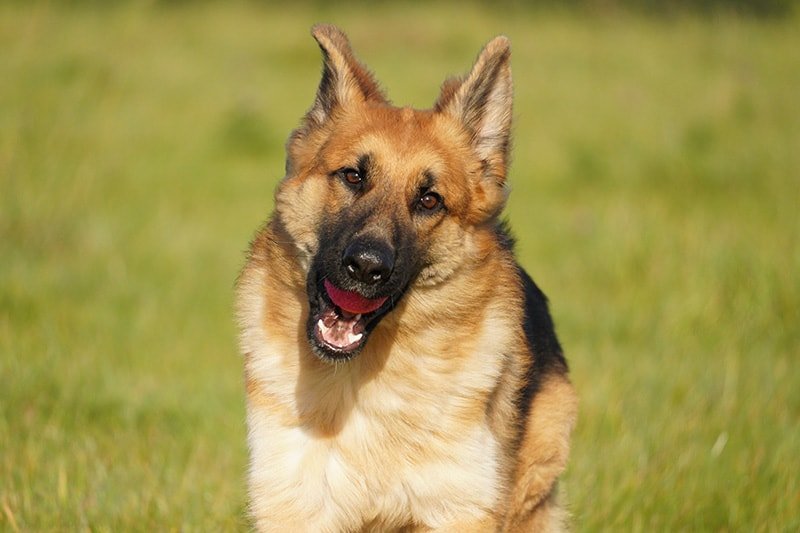
Sony a6400 + E 70-350 @ 350mm | 1/2000 | f/6.3 | ISO 640 | Full Resolution SOOC Download: JPEG | RAW **
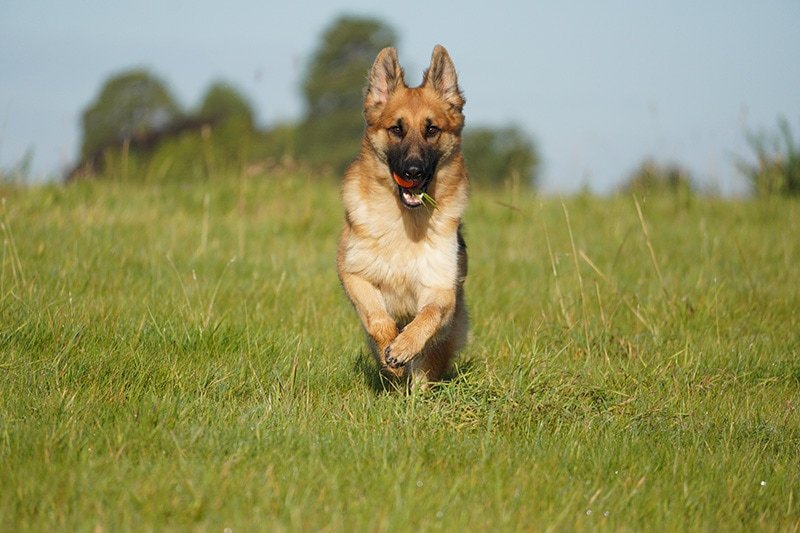
Sony a6400 + E 70-350 @ 350mm | 1/2000 | f/6.3 | ISO 500 | Full Resolution SOOC Download: JPEG | RAW **
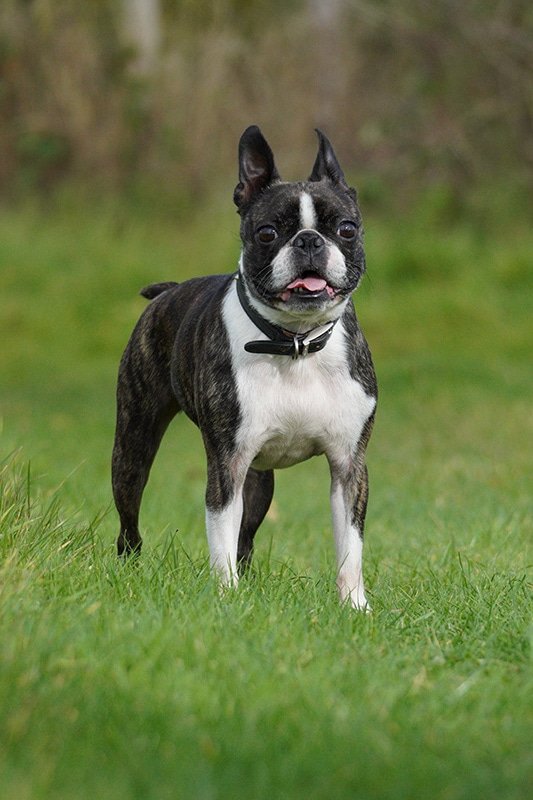
Sony a6400 + E 70-350 @ 160mm | 1/2000 | f/5.6 | ISO 1000 | Cropped | Full Resolution SOOC Download: JPEG | RAW **

Sony a6400 + E 70-350 @ 210mm | 1/2000 | f/6.3 | ISO 1000 | Cropped | Full Resolution SOOC Download: JPEG | RAW **
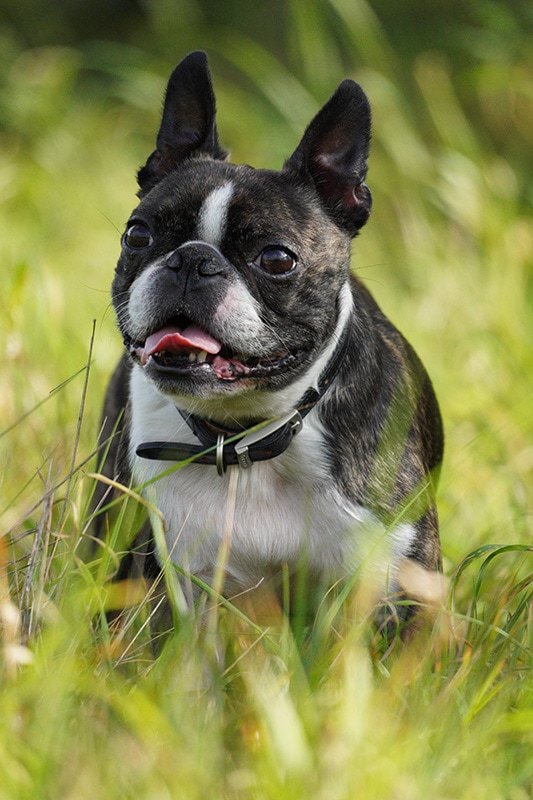
Sony a6400 + E 70-350 @ 250mm | 1/2000 | f/6.3 | ISO 2000 | Full Resolution SOOC Download: JPEG | RAW **
Sony FE 70-300 Sample Photos

Sony a6400 + FE 70-300 @ 300mm | 1/2000 | f/5.6 | ISO 400 | Full Resolution SOOC Download: JPEG | RAW **
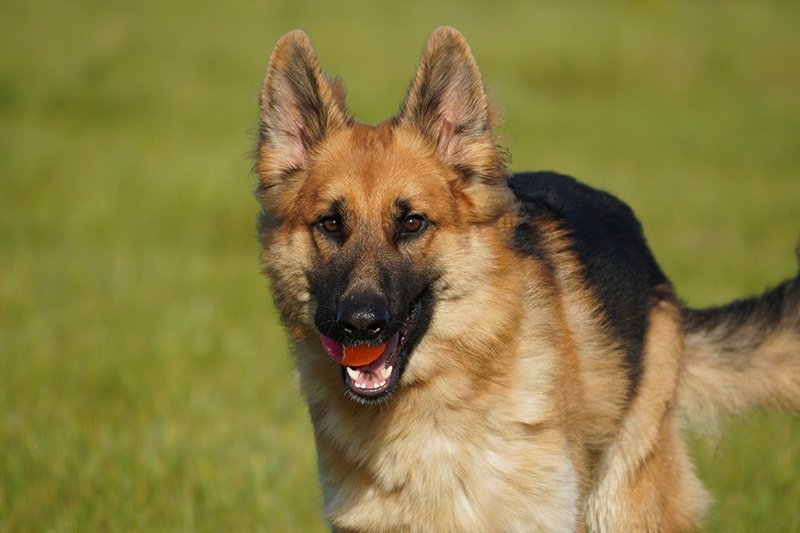
Sony a6400 + FE 70-300 @ 300mm | 1/2000 | f/5.6 | ISO 400 | Full Resolution SOOC Download: JPEG | RAW **
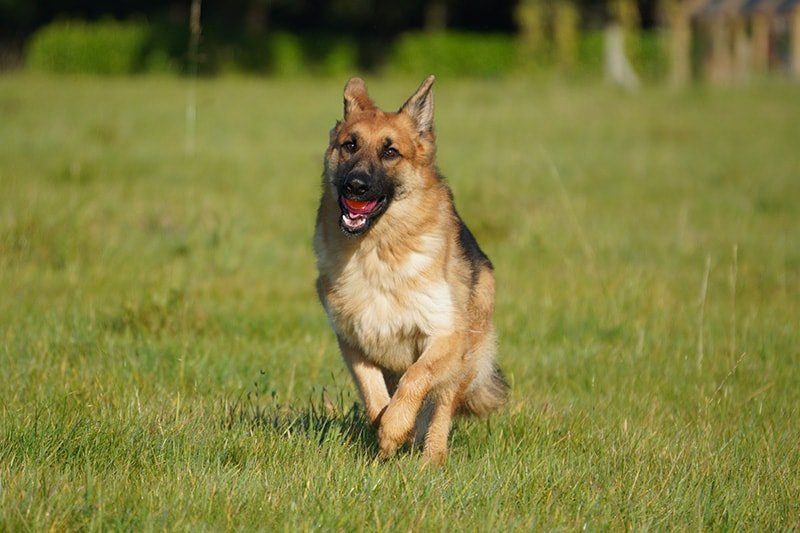
Sony a6400 + FE 70-300 @ 300mm | 1/2000 | f/5.6 | ISO 400 | Full Resolution SOOC Download: JPEG | RAW **
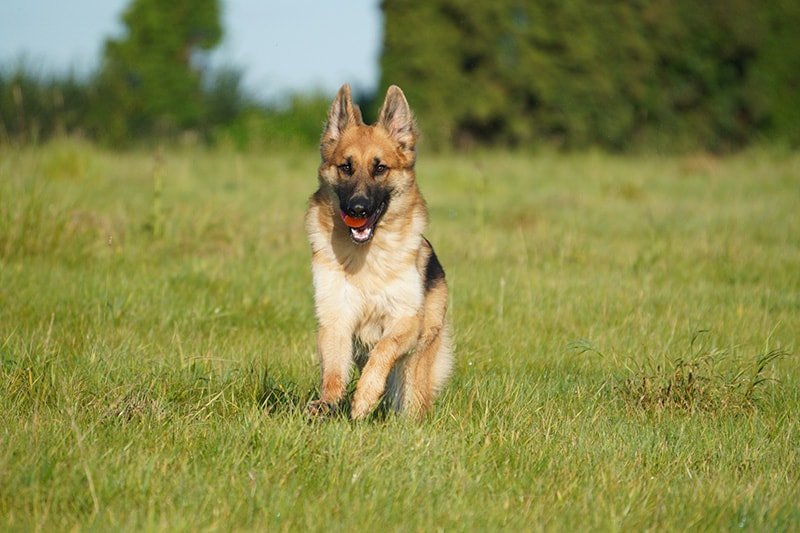
Sony a6400 + FE 70-300 @ 300mm | 1/2000 | f/5.6 | ISO 400 | Full Resolution SOOC Download: JPEG | RAW **
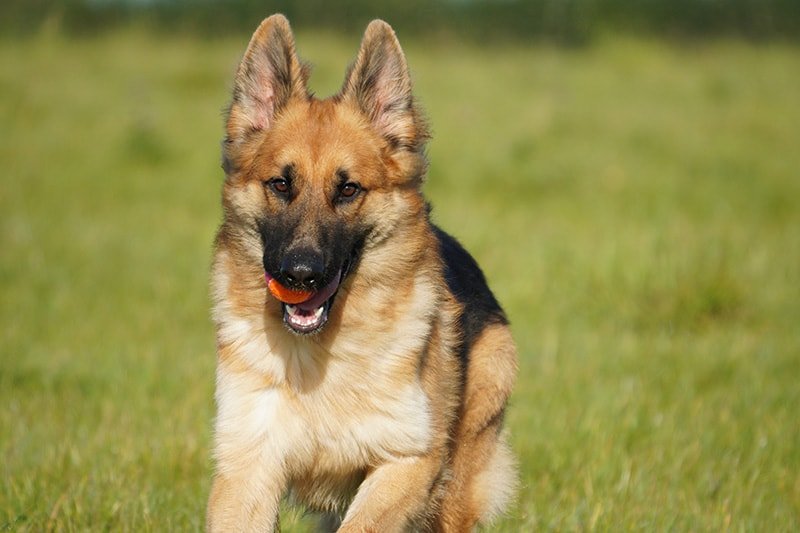
Sony a6400 + FE 70-300 @ 300mm | 1/2000 | f/5.6 | ISO 400 | Full Resolution SOOC Download: JPEG | RAW **
Still to Come
I’ll be adding sharpness comparisons, bokeh, color rendition, flare control, chromatic aberrations, stabilization, and minimum focus distance.
Please do let me know in the comments below if you’d like to see a specific comparison, or have a suggestion as to how I can improve my comparisons here.


Leave a Reply